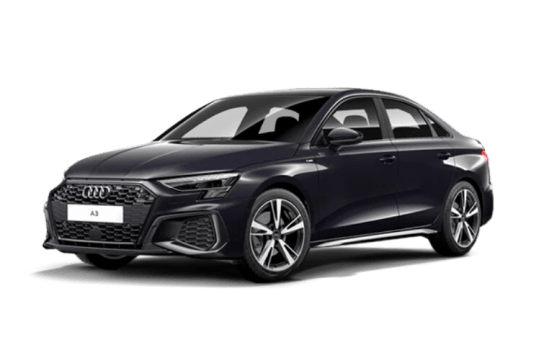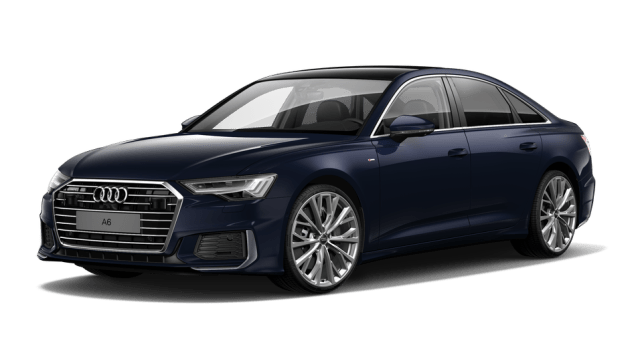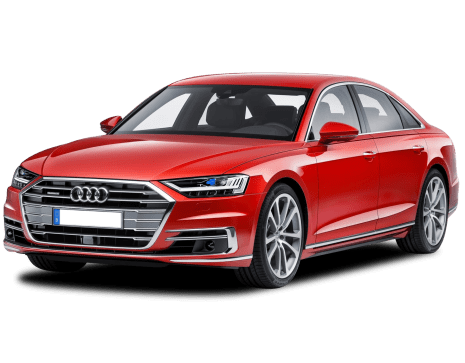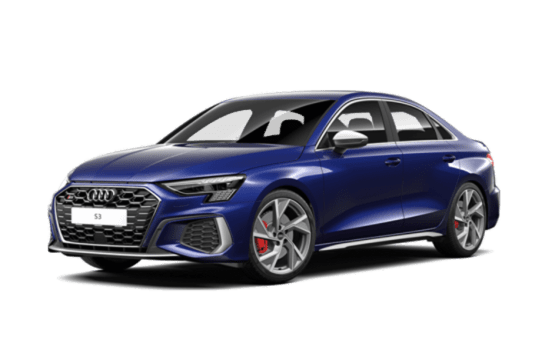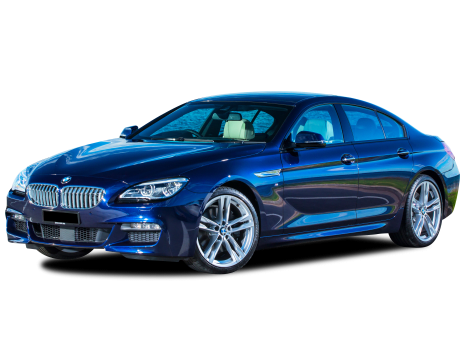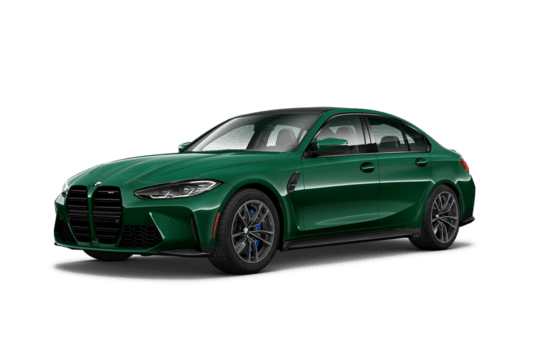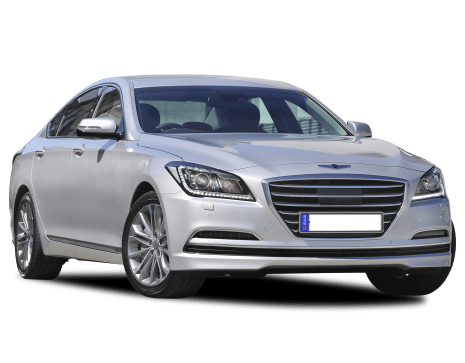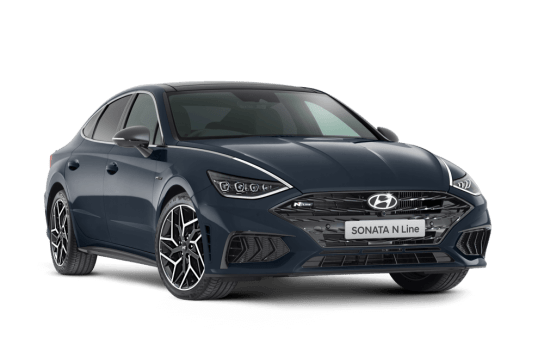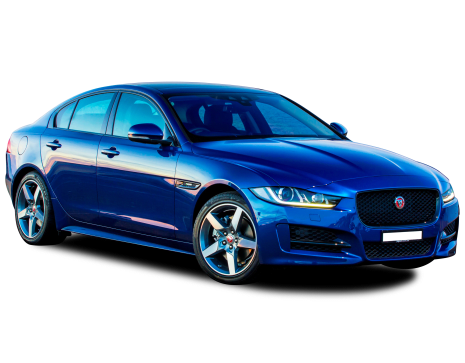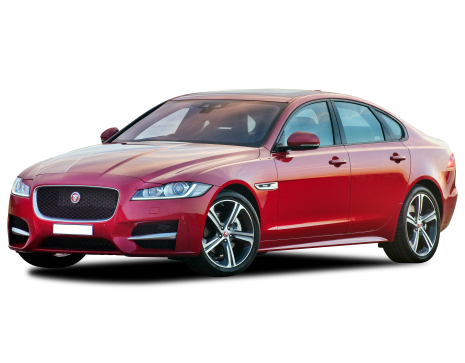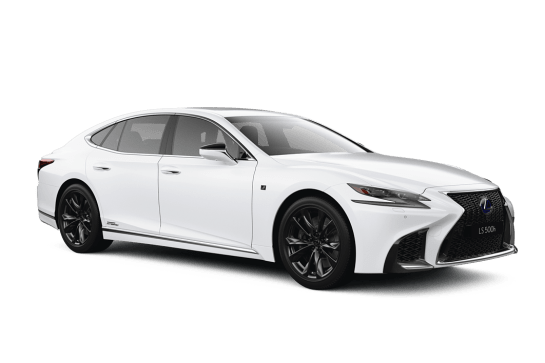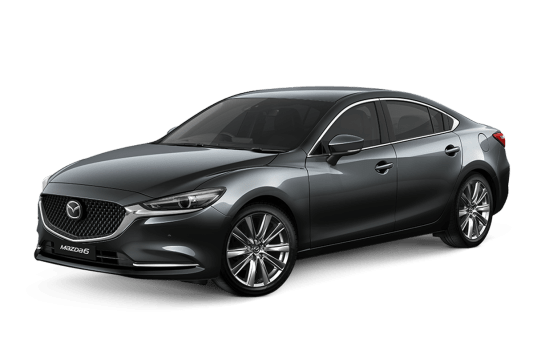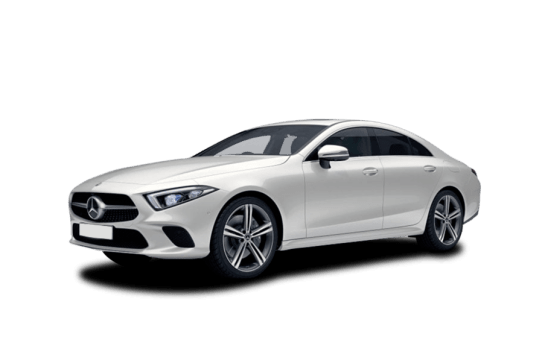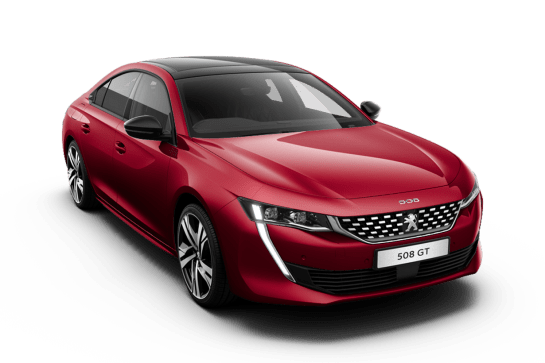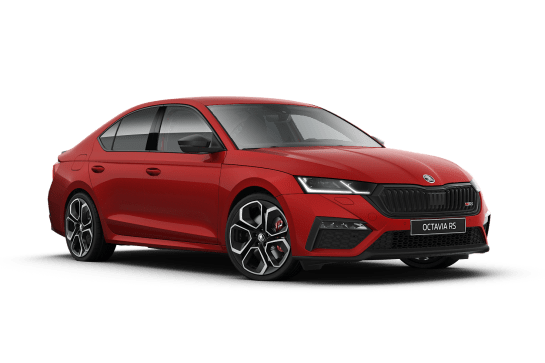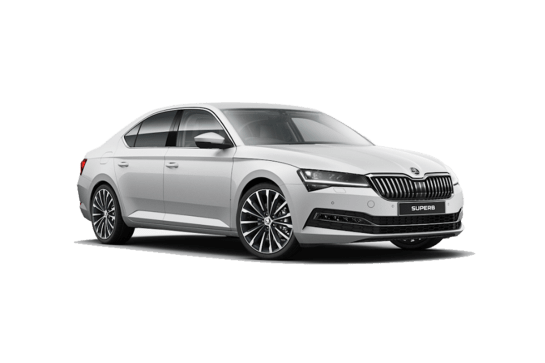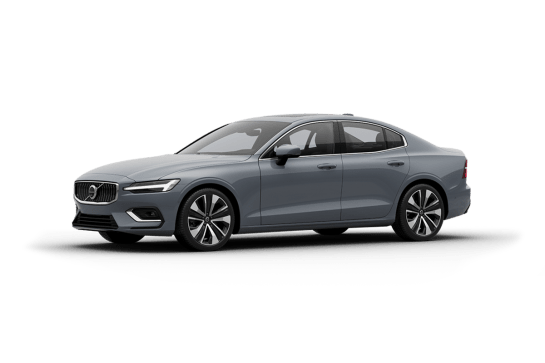
Volvo S60 VS Skoda Octavia
Volvo S60
Likes
- Elegant proportions and styling
- Feature-laden
- Superb on-road driving experience
Dislikes
- Sedate cabin compared to rivals
- Works best as a four-seater
- Not a lot of storage options
Skoda Octavia
Likes
- Value
- Practicality
- Safety
Dislikes
- Floaty ‘Comfort’ mode
- Drinks premium unleaded
- No 12V outlet in cabin
Summary
Volvo S60
Sedans have long been supplanted by SUVs as the family favourite but they still have their charms for those drivers who like something that feels more dynamic on the road.
Enter the limited edition Volvo S60 Recharge Black Edition which sees the return of a plug-in hybrid powertrain for Volvo’s only sedan.
I’ve been family-testing the PHEV variant to see just how practical a sedan is for the modern family, and whether it's rivals, the Audi A4, BMW 3 Series and Mercedes-Benz C200 have anything to worry about.
Read more about
- Revolutionary change sweeping the electric car market: Volvo is the latest car brand to target Tesla with 'mega casting' manufacturing process for its Tesla Model Y and BMW iX3 rivalling EX60 - report
- Game changing battery tracing technology: 2025 Volvo EX90 launches 'battery passport' ahead of 2027 European mandate
- "Everyone's saying the shine's come off it, but our product strategy is clear": Volvo laser-focused on pure-electric car future despite Ford, General Motors, Mercedes-Benz and others dialing back EV plans
| Safety rating | |
|---|---|
| Engine Type | 2.0L turbo |
| Fuel Type | Hybrid with Premium Unleaded |
| Fuel Efficiency | 1.4L/100km |
| Seating | 5 seats |
Skoda Octavia
Where were you in the year 2000? Cowering in a dark corner, hoping the Y2K bug wouldn’t wipe out civilisation as we knew it? Or, confidently on the front foot, shopping for a new car to transport you and your family safely into the next millennium?
If it was the latter, the most popular options back then were hatchbacks, sedans and wagons. The Ford Falcon, Holden Commodore, Mitsubishi Magna and Toyota Camry were at the height of their powers and the term ‘SUV’ was largely confined to North America, describing off-road outliers like Jeeps and Range Rovers.
Brands from Mazda to Mercedes-Benz, Peugeot, Volvo and heaps of others all offered family-friendly wagons alongside their sedan counterparts.
Read more about
- Segment-bending Euro rival to Kia EV5, Xpeng G6, and Tesla Model Y takes shape ahead of Australian arrival in 2025
- Your next family SUV? Mazda CX-80, Kia Sorento and Hyundai Santa Fe-rivalling 2025 Skoda Kodiaq standard features revealed
- Why so many car brands lost sales in Australia during 2024 including Tesla, MG, Ram and Jeep
Fast forward a quarter of a century and we’re in a world of SUVs and utes, with the traditional ‘station wagon’ almost consigned to history. But Skoda is keeping the wagon dream alive with its mid-size Octavia sedan (liftback) and wagon.
And the subject of this review is the just-arrived, 2025 model year iteration of the flagship Octavia RS, designed to combine functional pragmatism with smile-inducing performance. Let’s check it out.
| Safety rating | |
|---|---|
| Engine Type | 2.0L turbo |
| Fuel Type | — |
| Fuel Efficiency | 7L/100km |
| Seating | 5 seats |
Verdict
Volvo S608.3/10
The Volvo S60 Recharge Black Edition proves sedans can still be sexy and an excellent family car, providing your family is on the smaller side. I only have one kid, so it's perfect for our activities and gear. It’s wonderful to drive and has a great features list but it's not without its quirks.
My son thinks it looks cool, and we enjoyed bellowing out a few renditions of the original Batman theme song this week. He has had a lot of comfort in the back seat, too.
Skoda Octavia8.3/10
While other brands may have a higher profile, the quality of this Octavia RS proves Skoda deserves a greater share of the limelight. If you’re thinking about a primo mid-size sedan, or wagon, or even a medium SUV, this car combines satisfying performance with low-to-the-ground dynamics, immense practicality, top-shelf safety and solid value-for-money. It’s nicely put together using quality materials and the ownership package is class competitive. Do yourself a favour and add it to your new-car shopping list.
Note: CarsGuide attended this event as a guest of the manufacturer, with travel, accommodation and meals provided.
Design
Volvo S60
The S60 Black Edition nails it on design. It sports a handsome and sleek shape that manages to look sporty and elegant. It's exactly what you expect a luxury sedan to look like.
My seven-year old dubbed this the Batmobile, and for good reason, every accent is black!
The grille, badge and 19-inch five-spoke alloys look aggressive against the 'Hammer of Thor' LED headlights and make this design look hot.
You better like black paintwork, though, as that is the only choice for this variant.
The interior hasn’t seen any changes for the 2025 model and it seems Volvo is streamlining most of its interiors to look the same.
You could find this dashboard in most of its cars, which is fine because it’s a good-looking treatment full of soft-touchpoints and high-quality materials. But there’s also nothing that sets the Black Edition apart from its stablemates. It would be nice to see a point of difference.
The dashboard is headlined by the 9.0-inch touchscreen multimedia system and a 12-inch digital instrument cluster. You have some other nice focal points in the large sunroof and massive air-vents, which add some interest to the dash.
Overall, it’s a pleasant interior but maybe not as fun as some of its rivals.
Skoda Octavia
The current Octavia complies with Skoda’s sharp and angular approach to exterior design, with cool, jagged LED headlight clusters sitting either side of a blacked-out octagonal grille.
A brand signature is the bonnet shutting low and flush over the front guards to create a broad hood panel with longitudinal character lines running down its length. Similar creases flow confidently along the car’s flanks with 19-inch alloys filling the wheel wells nicely.
A smoothly tapering turret ends with a steeply raked rear screen on the sedan and wagon with angular LED tail-lights following a similar pattern to the headlights.
As well as the black grille, car-spotters should look out for the RS’s black finish on the window frame surrounds, roof rails (wagon only) wing mirrors and tailpipes as well as red brake calipers and RS sports bumpers front and rear.
Always a subjective call, but I for one think this car looks distinctive and contemporary while avoiding unnecessary flashiness.
Inside, the treatment is relatively reserved, with a grey through to black colour palette and high-quality materials, including soft-touch surfaces around the dash, doors and console, as well as ‘mouse fur’ and faux carbon sections on the upper dash.
The sports front seats are trimmed in a combination of synthetic leather and synthetic suede with quilted panels in the centre of the cushion and backrest. They feel as good as they look and are easy to get in and out of. Red contrast stitching throughout the interior dials up the racy tone.
A sizeable central media touchscreen sits proud of the dash with the VW Group’s ‘Virtual Cockpit’ ahead of the driver configurable through multiple set-ups. And a smattering of dark chrome and brushed metal highlights (including on the pedals) finish off a beautifully executed interior.
Practicality
Volvo S60
The cabin of the S60 is fairly practical with the front row feeling spacious for my 168cm height. It’s a low car, so if your knees squeak you might find it annoying to get in and out of!
The comfort of the front seats cannot be understated. They feature a two-position memory function, lumbar- and side-bolster adjustments and under-thigh extenders. Plus, with the heat and ventilation functions, you’ll look forward to a long journey.
Because of the sloping roofline, it’s a bit awkward to get in and out of the back seat but once you’re in there is a stack of room (behind my driving position) and the outboard seats hug you into position, so you don’t move around in corners.
Seats are comfy for long journeys and outboarders enjoy heat functionality, too. The pillar-mounted directional air vents are super practical and the hardened kickplates are a godsend for parents with wildlings like my son, who seem to want to put their feet on everything.
The transmission tunnel is massive, though, so keep the middle seat reserved for kids only.
Up front, individual storage isn’t as great as you might hope for with the glove box being the largest cubby on offer. The middle console is literally a tray and it doesn't fit my iPhone 15 Pro Max (I have a thin case, as well!).
There's no centre console storage aside from the two cupholders, and this variant misses out on a wireless charging pad, so my phone and 'bits' have been shoved into the cupholders or on the passenger seat, which is a tad annoying. The storage bins in each door feature a small drink bottle holder but are, again, shallow.
Individual storage is a bit better in the rear with two net map pockets, two large cupholders in the fold-down arm rest, as well as a drink bottle holder in each storage bin.
Technology is well-rounded and the multimedia system (powered by Android Automotive) is easy to use, but curiously you don’t get Android Auto in this model!
You do get a bunch of built-in apps like Google Maps and Spotify. There's wired Apple CarPlay and satellite navigation, too.
You get a head-up display and the digital instrument cluster looks high-end with its graphics and shows your sat nav directions, which is always handy.
Charging options throughout are good with two USB-C ports in each row, while the front also gets a 12-volt socket.
The boot is slightly smaller compared to its rivals at 427L thanks to the electric components but it is still well-sized for my grocery run and it’s not too difficult to grab things that slide to the back.
You get a 'tyre mobility kit' (rather than a physical spare) underneath the floor and I like the way you can hang the home charging cable bag out of the way.
The Black Edition has a hands-free tailgate which is operated by a kick-function. But you don’t have an electric button on the lid and the kick-function didn’t always work to close it! That said, the lid isn’t heavy, so it’s nothing to split hairs over.
Skoda Octavia
Practicality is an area where Skoda comes into its own. At every turn the brand’s design and engineering teams have obviously kept day-to-day usability in mind with thoughtful tweaks to make life easier.
Some have become low-key famous like an umbrella slotted into the driver’s door (Rolls-Royce-style) and a small lidded rubbish bin in the driver’s door pocket.
But over and above that, the Octavia’s efficient packaging means in a car measuring just on 4.7m long there’s heaps of room up front for the driver and passenger, with lots of handy storage options.
Aside from generous door pockets there’s a box between the seats with a padded lid (adjustable for height and length when in use as an armrest), a 15W wireless charging pad (with ventilation from below to keep devices cool), a big glove box (with pen holder), multiple cupholders, a cupholder insert able to hold a phone and/or some coins, numerous oddments trays and a sunglasses compartment overhead (not fitted with optional panoramic sunroof).
And in the back, sitting behind the driver’s seat, set for my 183cm height, there’s tons of leg and headroom with more practical design thinking on display.
For example, map pockets on the back of the front seats have a phone-sized slot stitched into them. There are pull up shades for each window, big bins in the doors with plenty of room for bottles and more, a pull-down centre armrest with fold-out cupholders (plus some oddments space), adjustable climate control vents plus a box on the floor for extra bottles and ‘stuff’ (removable if you need foot room for a centre passenger).
Power and connectivity runs to five USB-C sockets (two front, two rear and one near the rear-view mirror for dashcam duty) plus a 12-volt outlet in the boot.
Speaking of which, head to the boot and the ‘plenty of room’ theme continues. With the 60/40 split folding rear seat upright there’s 600 litres of space in the sedan and 640 litres in the wagon. Lower the backrest and that number increases to 1555 and 1700 litres, respectively. That’s plenty, and more than the Mazda6.
The sedan and wagon feature anchor points for securing loose loads, extra storage bays behind the rear wheel wells, there’s a ski-port door behind the rear armrest, load divider rails in the sedan, remote release handles for the rear seat, bag hooks, a luggage net… the lot.
The powered tailgate includes hands-free opening, there’s a space-saver spare under the floor and towing capacity for a braked trailer is 1600kg (750kg unbraked).
Price and features
Volvo S60
There are two variants for the S60, the mild-hybrid Ultimate or the plug-in-hybrid Recharge Black Edition, the latter being our test model.
The Recharge Black Edition is priced from $88,990, before on road costs, which positions it towards the lower end of the market, with the Audi A4 Avant 45 TFSI Quattro S Line MHEV being the most affordable at $85,700 MSRP.
Next up is the Mercedes-Benz C200 MHEV at $89,900 MSRP and then the BMW 330e M Sport PHEV at $98,700 MSRP.
The interesting thing, though, is you don’t pay extra for any packs on this model, which is rare for a luxury brand. It’s pretty well-specified already.
Luxury features include powered front seats that have adjustable side-bolsters, lumbar support and two-position memory function, as well as heat and ventilation functions.
Other items include heated rear outboard seats, a heated steering wheel, a panoramic sunroof and beautiful Nappa leather upholstery throughout.
Practical features include dual-zone climate control, handsfree boot opening and double locking, which is when you lock the car from the outside and if there is forced entry via a smashed window, for example, the doors still can't be opened, even from the inside.
Technology is robust with a 9.0-inch touchscreen multimedia system including in-built Google Apps (Google Play and Maps, YouTube, and Spotify).
Other items include wired Apple CarPlay, the 'Volvo Car Services App' with a four-year subscription and over-the-air updates, 12-inch digital instrument cluster, Bluetooth connectivity, digital radio and a 15-speaker Bowers & Wilkins 'High Fidelity' audio system.
Unfortunately on this variant, you miss out on Android Auto capability and a wireless charging pad.
Skoda Octavia
Priced at $58,490 for the sedan and $59,990 for the wagon, both before on-road costs, the Octavia RS has one competitor that meets the mid-size sedan and wagon criteria with cost-of-entry somewhere in the same ballpark. And that’s the current Mazda6 20th Anniversary Edition.
Pitched at $54,385, before on-road costs, for the sedan and $55,685 (BOC) for the wagon, the Mazda goes toe-to-toe with the Skoda on size, equipment and performance, although the ‘6’ leans more towards a premium rather than outright performance vibe. And the Mazda has recenetly been discontinued in Australia.
The Accord VTi-LX Hybrid ($59,900, drive-away) puts Honda in the sedan mix and if you’re considering a pure electric medium sedan, the BYD Seal Premium comes in at $58,798, before on-roads while the Tesla Model 3 Single Motor RWD sits at $54,900.
So, aside from the safety and performance tech, covered a little later, what can you bank on in terms of included features for a price tag giving $60K a serious nudge?
The answer is… heaps. Standard equipment on the Octavia RS includes three-zone climate control, adaptive cruise control, a 13-inch multimedia touchscreen, sat nav, 12-speaker Canton audio (with digital radio), a 10-inch configurable digital instrument display, a head-up display, sports front seats (heated with six-way power adjust, memory and massage function), heated rear (outboard) seats, a power tailgate (with hands-free opening), keyless entry and start and rain-sensing wipers.
There’s also ‘Intelligent Park Assist’, LED external lighting (including matrix LED headlights), 19-inch alloy rims, heated and power-folding exterior mirrors (with memory function), synthetic leather and synthetic suede trim, a flat-bottom leather-trimmed steering wheel, alloy finish pedals and rear privacy glass as well as wireless Android Auto and Apple CarPlay.
Worth noting solid, metallic and pearlescent paint options (seven colours) are included as standard, with the single premium metallic ‘Velvet Red’ colour adding $770.
That’s as much fruit as you should expect in this part of the market and a bit more.
Under the bonnet
Volvo S60
The S60 Recharge Black Edition’s plug-in hybrid powertrain features a 2.0-litre, turbo-petrol, four-cylinder engine and an electric motor that combine to produce 340kW of power and 709Nm of torque.
It has serious kick and can do a 0-100km/h sprint time of just 4.5-seconds. The eight-speed auto transmission is smooth as silk and creates a refined on-road driving experience.
Skoda Octavia
The Octavia RS is designated ‘195TSI’ which relates to the power output of its 2.0-litre, four-cylinder, turbo-petrol engine driving the front wheels through a seven-speed dual-clutch auto transmission.
It’s a fourth-generation evolution of the Volkswagen Group’s long-serving ‘EA888’ engine series, an iron block/alloy head unit featuring direct-injection and variable valve timing to produce (you guessed it) 195kW and 370Nm.
Efficiency
Volvo S60
The official combined cycle fuel consumption figure is an extremely low 1.4L/100km and I did two economy tests this week covering a healthy mix of open-road and urban driving.
Charging it every day for four days, gave me a real-world usage of 3.8L/100km and charging it once in three days gave me a trip readout of 5.6L/100km.
The PHEV powertrain has proven itself economical whether you dedicate yourself to the charging or not, so that’s pretty good.
The Black Edition features a Type 2 port for AC charging, but it can’t be hooked up to a DC fast charger.
This doesn't worry me because even on a standard domestic house socket you can charge the 19kWh battery from 0-100 per cent in just five hours, which is pretty fast for a PHEV.
You also get up to 90km of WLTP-rated pure electric driving range in this, which is good for a plug-in.
Skoda Octavia
The Octavia RS’s official fuel consumption figure on the combined (urban/extra-urban) cycle is 7.0L/100km, the 2.0-litre turbo-petrol engine emitting 159g/km of CO2 in the process (wagon 160g/km).
A start/stop function is standard and on a launch drive program through rural Victoria, covering several hundred kilometres’ worth of urban, B-road and freeway running we saw a (dash-indicated) figure of 6.9L/100km. With a 50-litre fuel tank on board, the RS’s theoretical range is around 715km.
In the city, expect an average in the high 8.0 range, which isn’t out of order for a 1.5-tonne sedan (1.6-tonne wagon).
Driving
Volvo S60
A lot of people think driving a Volvo means it’s stately or boring. Get in the Black Edition and it will change your mind.
The power it has is awesome and the pick-up will blow your hair back. Power delivery feels effortless.
The firm suspension and steering provide great road feedback and dynamic handling. While the suspension is firm, the comfort in the cabin is high and you don’t wince going over a pothole. The cabin is very quiet which makes it feel refined, too, even at higher speeds.
You do feel a bit low when you’re sitting next to a big SUV at lights but visibility is pretty good with the wide windows and pillars that don’t get in the way.
I've been precious about going over speed bumps or exiting a ramp, because it's easy to scrape underneath the nose as the S60 sits quite low. But on a whole it's pretty easy to park.
The 360-degree view camera system is clear and has a birds-eye and reversing view but I'd like to see both feeds pop up at the same time. It's easy enough to flit between the views when needed.
Skoda Octavia
Skoda claims 0-100km/h acceleration in 6.4 seconds for the Octavia RS sedan and 6.5sec for the wagon and it feels willing with solid mid-range punch available.
Peak power comes on stream up high (5250-6500rpm) but maximum pulling power is on tap from 1600-4500rpm, which is spot-on for urban running, easy highway cruising and safe overtaking.
A sports exhaust dials up a rorty note when pushing on and the seven-speed dual-clutch transmission proved quick and smooth on a launch drive covering mainly rural B-roads and some freeway sections.
Steering wheel-mounted paddles add extra involvement when you’re in the mood to push through some twisty stuff and select ratios manually.
Speaking of corners, suspension is by struts at the front and a multi-link arrangement (unique to the RS grade) at the rear, with an electronically controlled limited slip differential and ‘Dynamic Chassis Control’ standard. Ride height is 15mm lower than the standard Octavia.
DCC is Skoda code for an adaptive damper set-up and the system offers a ‘Comfort’ mode to help manage bumps, although it adds an air of floatiness on the open road. As the name implies, ‘Sport’ buttons everything down and road imperfections immediately make their presence felt. ‘Normal’ is surprisingly comfortable without upsetting the car’s balance and overall compliance.
Standard rubber is 225/40 Bridgestone Potenza S005, providing a good grip vs comfort compromise, and the electrically assisted progressive rate rack and pinion steering is accurate, providing good road feel without being too sharp or ‘pointy’. Braking is by ventilated discs all around and the pedal is strong and progressive.
Under the heading of miscellaneous observations, engine, wind and road noise are modest, the grippy sports front seats remained comfortable over several hours behind the wheel, plus a relatively tight 10.4m turning circle and standard 360-degree camera view system make parking easy.
Safety
Volvo S60
The S60 Recharge Black Edition has just been launched, so it’s not covered by its siblings’ maximum five-star ANCAP safety rating from 2018 but it features all of the goodies you’d expect from a Volvo.
Standard features include blind-spot monitoring, rear collision warning, forward collision warning, rear cross-traffic alert, lane departure alert, lane keeping aid, traffic sign recognition, an intelligent seatbelt warning, a head-up display, adaptive cruise control, 'Pilot Assist', a tyre mobility kit and a 360-degree view camera system, as well as front, side and rear parking sensors.
The S60 Black Edition also features Volvo designed safety items like the 'Side Impact Protection System' (SIPS) that reinforces the car's steel framework at the sides and disperses energy in a side collision.
It also features a 'Whiplash Injury Protection System' (WHIPS), which if hit from behind, the headrests move with the occupants to limit injuries.
One of the highlights is the programmable spare key where you can limit audible levels and speed limits. Which is perfect if you have a teenager who borrows your car. And the spare key is bright orange, so there's no sneaky 'whoops, I grabbed the wrong key' moments!
The rear row features two ISOFIX child seat mounts and three top-tethers. You'd be doing very well to fit three child seats in, so two will fit best.
Skoda Octavia
The current Skoda Octavia was given a maximum five-star ANCAP rating following assessment in 2022. High scores in the adult and child occupant protection categories focused on the stability of the car’s passenger compartment in front offset, full front, side and pole impact crash tests.
For the 2025 model year, standard active (crash-avoidance) tech now includes turn assist and advanced driver fatigue detection, which is on top of auto emergency braking (AEB) operating from 5.0-250km/h (with car and ‘vulnerable road user’ detection plus junction assist), lane keeping assist (and emergency lane keeping), rear AEB, blind-spot monitoring, rear cross-traffic alert, a reversing camera, a 360-degree camera view, tyre pressure monitoring, front and rear parking sensors and more.
If, despite all that, a crash is unavoidable the airbag count runs to 10 - dual front, front side, rear side, side curtain, front centre and driver's knee.
There are three top tether points for securing child seats across the second row with ISOFIX anchors on the two outer rear positions.
That’s an impressive safety run down, as good or better than any category competitor.
Ownership
Volvo S60
The S60 comes with a five-year/unlimited km warranty, which is a normal term for the class.
You can pre-purchase either a three- or five-year servicing plan and the three-year plan costs $1750, while the five-year plan costs a flat $3000 or an average of $600 per service, which is reasonable.
Servicing intervals sit at every 12 months or 15,000km, whichever occurs first.
Skoda Octavia
The Octavia is covered by Skoda’s seven-year/unlimited kilometre warranty, which is ahead of the mainstream five-year warranty pack, although a little short of some, like MG and Mitsubishi at 10 years.
Service is recommended every 12 months/15,000km and a four-year/60,000km service pack will set you back $2000, with 12 months’ roadside assistance topped up for another year after each trip to an authorised workshop.
That $500 per service charge is a solid amount but not outrageous for a premium, especially Euro, mid-sizer. For reference the Mazda6 20th Anniversary averages $552 per service over the same period.


